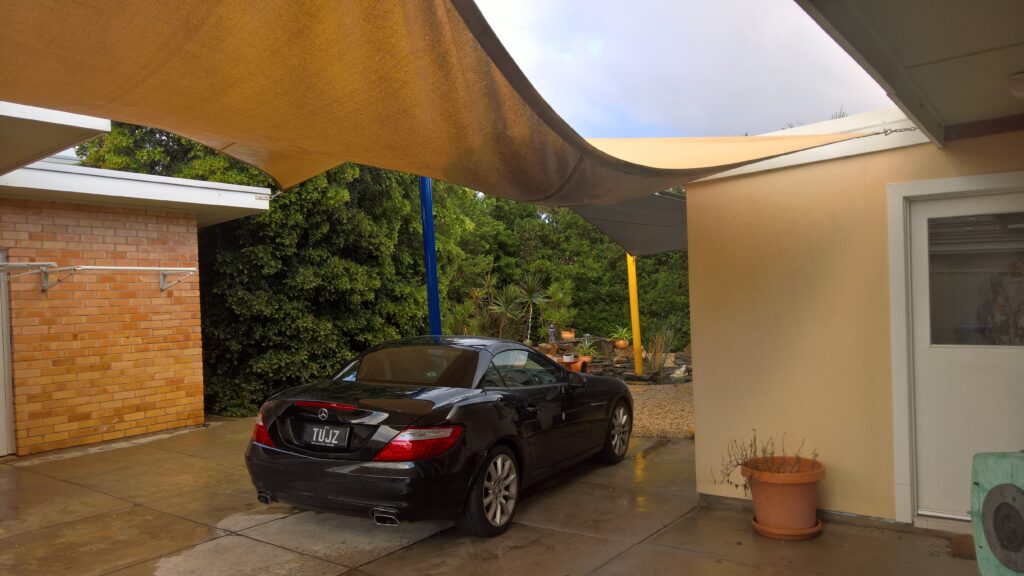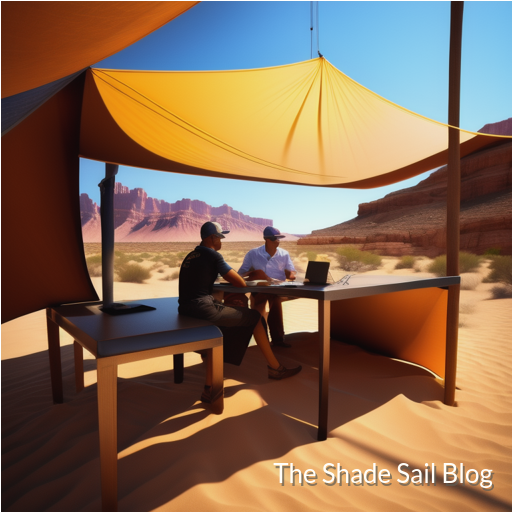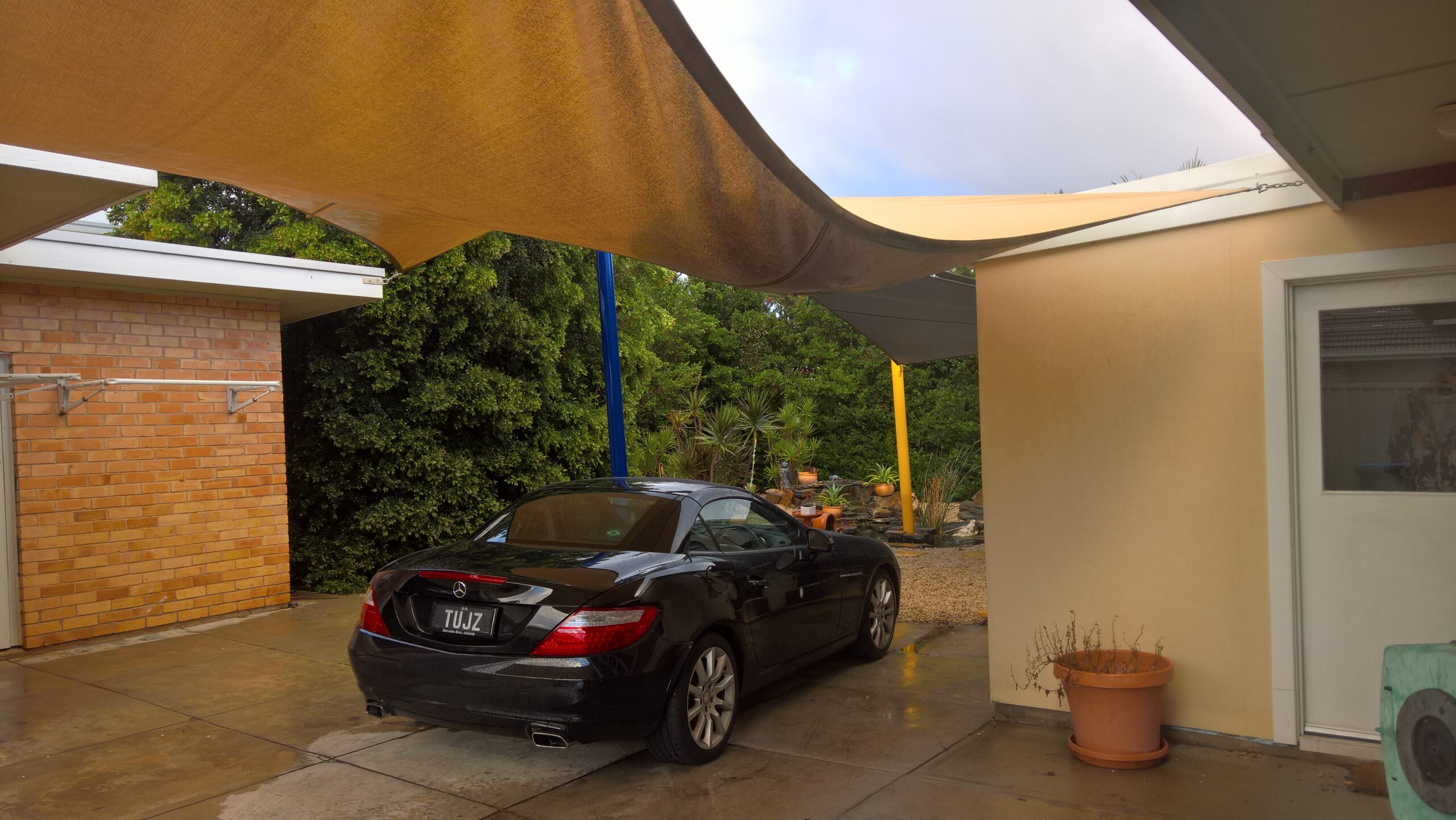
Advantages of Permeable Shade Cloth:
Breathability: Permeable shade cloth allows air to pass through the fabric, promoting better airflow and ventilation. This feature helps to keep the shaded area cooler and more comfortable, especially in hot and humid climates.Temperature Regulation: The breathability of permeable shade cloth prevents heat from getting trapped underneath the shade sail. This helps in regulating temperatures and prevents the shaded area from becoming excessively hot.Wind Resistance: Permeable shade cloth is designed with an open weave pattern, allowing wind to pass through. As a result, it offers better wind resistance, reducing the risk of damage to the shade sail during strong winds.Water Drainage: Permeable shade cloth is capable of allowing water to pass through the fabric. This prevents water from pooling on the sail during rainfall and ensures efficient water drainage, reducing the risk of sagging or structural damage.
Disadvantages of Waterproof Shade Cloth:
Heat Buildup: Waterproof shade cloth does not allow air to pass through, which can lead to heat buildup underneath the sail. In hot weather, this lack of ventilation may make the shaded area feel warmer and less comfortable.Condensation: Because waterproof shade cloth doesn’t allow air circulation, it may lead to condensation buildup underneath the sail, especially in humid conditions. This can cause moisture-related issues and discomfort for those using the shaded area.Wind Stress: Waterproof shade cloth creates a larger surface area that is exposed to wind, which can result in higher wind stress on the sail and supporting structures. In strong winds, this increased wind load may pose a risk of damage to the shade sail.Water Puddling: While waterproof shade cloth repels rainwater, it can also lead to water puddling on the sail during heavy rain. Pooled water adds weight and strain to the sail and its anchor points, potentially causing damage or instability.
It’s important to note that both permeable and waterproof shade cloths have their specific use cases and advantages. The choice between the two depends on factors such as the local climate, desired level of rain protection, and the intended use of the shaded area. In regions with high temperatures and little rainfall, permeable shade cloth may be more suitable for its breathability and wind resistance. Conversely, in areas with frequent rain or a need for complete rain protection, waterproof shade cloth may be preferred despite the potential disadvantages.
RECYCLABILITY!
Vinyl (also known as PVC or polyvinyl chloride) shade sails are generally not easily recyclable due to the nature of the material and the additives used in its manufacturing. While some efforts have been made to develop recycling processes for PVC, it remains a challenging material to recycle compared to other plastics like PET or HDPE. (* NOTE All Shade sails from Sail Shade World are made with HDPE and are fully recyclable)
The recycling of vinyl depends on several factors, including the availability of recycling facilities that can handle PVC, the type of additives used in the vinyl fabric, and the condition of the material after use. PVC shade sails often contain additives to enhance their durability and performance, which can complicate the recycling process.
However, it’s essential to check with local recycling facilities and waste management authorities to see if there are any specialized recycling programs or facilities that can handle vinyl materials. Some regions may have recycling options for PVC, while others may not.
As sustainability and environmental awareness increase, manufacturers are exploring more eco-friendly materials for shade sails, such as high-density polyethylene (HDPE) or polyester, which are generally more recyclable and considered more environmentally friendly options.
If the recyclability and eco-friendliness of the shade sail material are a priority for you, it’s recommended to choose shade sails made from recyclable materials or contact the manufacturer to inquire about their recycling or disposal recommendations for their products.

